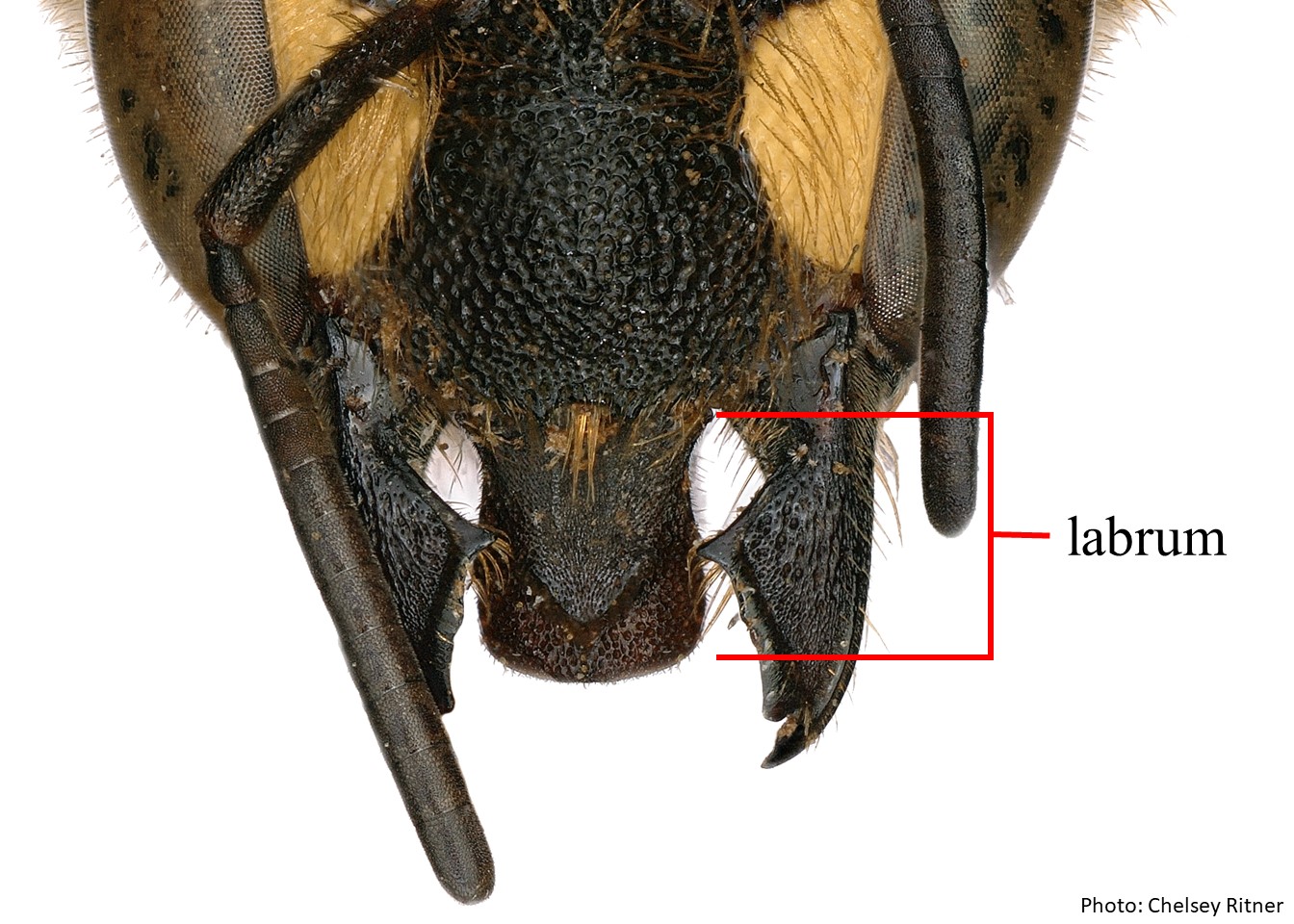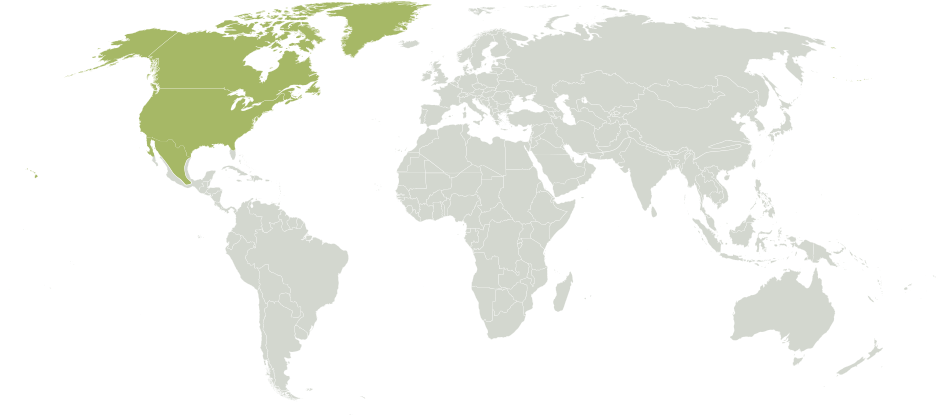Family: Megachilidae
Subfamily: Megachilinae
Tribe: Osmiini
Genus: Chelostoma Latreille, 1809
Subgenera: Chelostoma, Eochelostoma, Foveosmia, Gyrodromella, Prochelostoma
Common name: none
Chelostoma are small to moderately sized bees with slender, elongated bodies, and overall black coloration (Michener 2007Michener 2007:
Michener, C.D. 2007. The Bees of the World (2nd ed.). Johns Hopkins University Press, Baltimore and London, 953 pp.). Species native to North America range in body length from 3.4–9 mm, but some Eurasian species reach a length of 14 mm (Michener 2007Michener 2007:
Michener, C.D. 2007. The Bees of the World (2nd ed.). Johns Hopkins University Press, Baltimore and London, 953 pp.).
Chelostoma contains 54 described species in 5 subgenera worldwide (Michener) and at least 7 undescribed species (Müller 2018b). 11 species within 3 subgenera: Foveosmia, Prochelostoma, Gyrodromella occur in the U.S. and Canada (Michener 2007Michener 2007:
Michener, C.D. 2007. The Bees of the World (2nd ed.). Johns Hopkins University Press, Baltimore and London, 953 pp.).
(modified from Michener 2007Michener 2007:
Michener, C.D. 2007. The Bees of the World (2nd ed.). Johns Hopkins University Press, Baltimore and London, 953 pp.)
 elongate and apicalapical:
elongate and apicalapical: without preapicalpreapical:
without preapicalpreapical: with median elevation.
with median elevation. simple, unmodified, and without transverse preapicalpreapical:
simple, unmodified, and without transverse preapicalpreapical: with large depression or pit on the dorsaldorsal:
with large depression or pit on the dorsaldorsal:Chelostoma may resemble Hoplitis because of the elongated appearance. Chelostoma tends to have a longer scutumscutum:
the large segment on top of the thorax located between the wings and behind the head
than Hoplitis. In addition, the labrums of Chelostoma females have few and inconspicuous erect setaesetae:
a still hair-like structure or bristle
, and S6S6:
the plates on the underside of the abdomen, often abbreviated when referring to a specific segment to S1, S2, S3, S4, S5, S6, S7, or S8
 of the male is usually exposed (Michener 2007Michener 2007:
of the male is usually exposed (Michener 2007Michener 2007:
Michener, C.D. 2007. The Bees of the World (2nd ed.). Johns Hopkins University Press, Baltimore and London, 953 pp.).
Chelostoma campanularum is native to Europe and the Near East and was introduced to the U.S. in the 1960-70’s. It has a limited range, including upstate New York and Connecticut, and may be common in southern Ontario, Canada metropolitan areas (Buck et al. 2005Buck et al. 2005:
Buck, M., S.M. Paiero, and S.A. Marshall. 2005. New records of native and introduced aculeate Hymenoptera from Ontario, with keys to eastern Canadian species of Cerceris (Crabronidae) and eastern Nearctic species of Chelostoma (Megachilidae). Journal of the Entomological Society of Ontario 136: 37ndash;52.).
Chelostoma rapunculi is native to Europe and the Near East and was probably introduced around the same time as C. campanularum. Chelostoma rapunculi is adventive to most of the same areas as C. campanularum, occurring in upstate New York and southern Ontario, but may not be as common (Buck et al. 2005Buck et al. 2005:
Buck, M., S.M. Paiero, and S.A. Marshall. 2005. New records of native and introduced aculeate Hymenoptera from Ontario, with keys to eastern Canadian species of Cerceris (Crabronidae) and eastern Nearctic species of Chelostoma (Megachilidae). Journal of the Entomological Society of Ontario 136: 37ndash;52.).
Chelostoma, apart from 2 species, consists of species that florally specialize at either the family or genus level (Sedivy et al. 2008Sedivy et al. 2008:
Sedivy, C., C.J. Praz, A. Muuml;ller, A. Widmer, and S. Dorn. 2008. Patterns of host-plant choice in bees of the genus Chelostoma : the constraint hypothesis of host-range evolution in bees. Evolution. 62: 2487ndash;2507.). The families that Chelostoma specialize on are diverse and include Amaryllidaceae (1 species), Campanulaceae (13 species), Hydrophyllaceae (6 species), Ranunculaceae (4 species), Dipsacaceae (2 species), Asteraceae (2 species), Brassicaceae (2 species), Asparagaceae (1 species), Hydrangeaceae (1 species), Theaceae (1 species). Sedivy et al. (2008) provides host associations for 35 Chelostoma species.
Chelostoma are solitary bees that nest in preexisting cavities such as dead wood, hollow stems, and holes made by wood-boring beetles. Nests are not lined, but partitions and nest plug are made with a mixture of mud or sand mixed with nectar and saliva (Michener 2007Michener 2007:
Michener, C.D. 2007. The Bees of the World (2nd ed.). Johns Hopkins University Press, Baltimore and London, 953 pp.). Some species also include small particulates, such as tiny pebbles, in their cell partitions and nest plug (Müller 2018).
Chelostoma have a HolarcticHolarctic:
biogeographic region that encompasses the majority of habitats found throughout the northern continents of the world distribution, except for China and Japan. In North America, eight of the native species occur in California with a few of these species occurring north to Washington. One species, C. minutum, is distributed in the Intermountain West in Utah and Idaho. The only native species known to occur in central and eastern North America is C. philadelphi. Two additional species of adventive Chelostoma, C. (Foveosmia) campanularum and C. (Gyrodromella) rapunculi, occur in the Northeast (Michener 2007Michener 2007:
distribution, except for China and Japan. In North America, eight of the native species occur in California with a few of these species occurring north to Washington. One species, C. minutum, is distributed in the Intermountain West in Utah and Idaho. The only native species known to occur in central and eastern North America is C. philadelphi. Two additional species of adventive Chelostoma, C. (Foveosmia) campanularum and C. (Gyrodromella) rapunculi, occur in the Northeast (Michener 2007Michener 2007:
Michener, C.D. 2007. The Bees of the World (2nd ed.). Johns Hopkins University Press, Baltimore and London, 953 pp.).
Distribution map generated by Discover Life -- click on map for details, credits, and terms of use.
Buck, M., S.M. Paiero, and S.A. Marshall. 2005. New records of native and introduced aculeate Hymenoptera from Ontario, with keys to eastern Canadian species of Cerceris (Crabronidae) and eastern NearcticNearctic:
biogeographical region comprising North America as far south as northern Mexico, together with Greenland species of Chelostoma (Megachilidae). Journal of the Entomological Society of Ontario 136:37-52.
species of Chelostoma (Megachilidae). Journal of the Entomological Society of Ontario 136:37-52.
Michener, C.D. 2007. The Bees of the World (2nd ed.). Johns Hopkins University Press, Baltimore and London, 953 pp.
Müller, A. 2016. Palaearctic Osmiine Bees. ETH Zürich, http://blogs.ethz.ch/osmiini.
Sedivy, C., C.J. Praz, A. Müller, A. Widmer, and S. Dorn. 2008. Patterns of host-plant choice in bees of the genus Chelostoma: the constraint hypothesis of host-range evolution in bees. Evolution. 62:2487-2507.